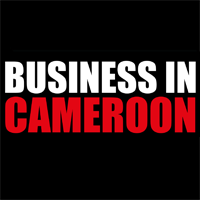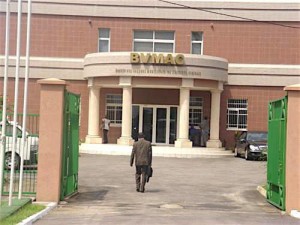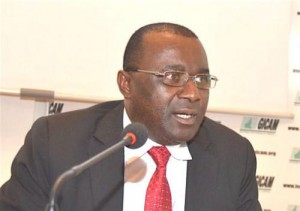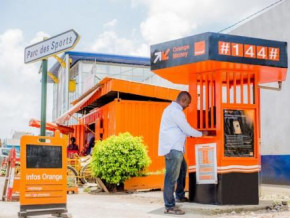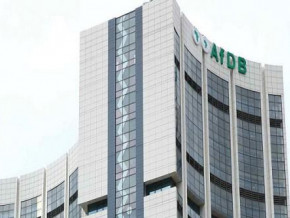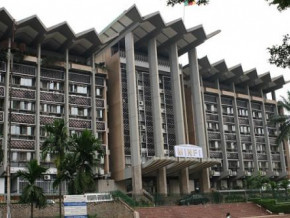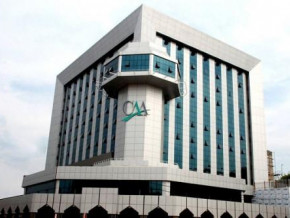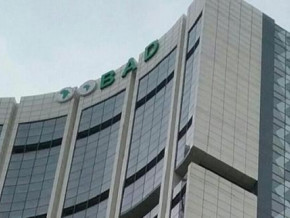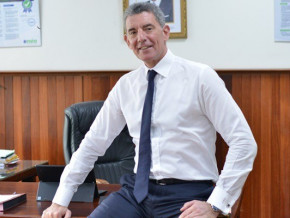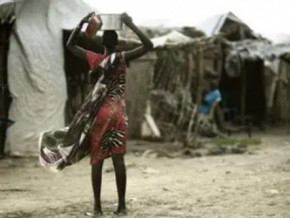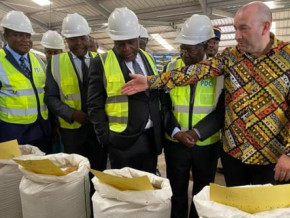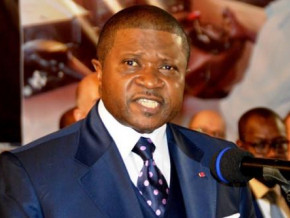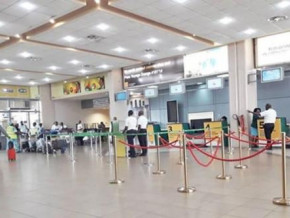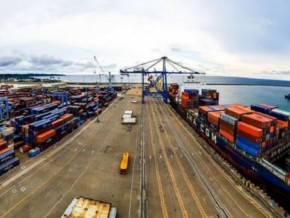
GIZ, the German Cooperation agency, offers IT system to CEMAC for raw materials management
The Commission of the Central African Economic and Monetary Community (CEMAC) will receive on 25 January 2017 in Yaoundé an IT and management system as part of the Project to strengthen the governance of raw materials in Central Africa (REMAP/CEMAC) led by the German Cooperation, Deutsche Gesellschaft für Internationale Zusammenarbeit (GIZ).
This IT system will help CEMAC’s headquarters and country representations, to have rapid access to all information processed in member-States, particularly with regards to the mining industries, GIZ explained. The organisation added: “Apart from training CEMAC personnel on rapidly accessing knowledge processed by the Commission via an innovative IT system, the REMAP project will bring its support to the provision of a server whose technical capacities will enable the storage of large amounts of data”.
REMAP is the result of a master agreement signed in 2008 between the German Federal Ministry of Economic Cooperation and Development (BMZ), and the CEMAC Commission. The missions of the project are, among other things, to help improve the contribution of mining resources to the reduction of poverty, contribute to strengthen transparency and governance of revenues from the mining sector and intensify international cooperation in the oil, gas and mining production sector.
S.A
CEMAC is preparing economic and financial reforms
After the extraordinary summit of the Economic and Monetary Community of Central African States (CEMAC), on 23 December 2016 in Yaoundé, where economic adjustments were decided for the sub-region with the support of the International Monetary Fund (IMF), the first meeting of the Steering Committee of the CEMAC economic and financial programme (PREF-CEMAC), gathering ministers of Economy from the member-States, was held on 16 and 17 January 2017 in Brazzaville, Congo.
Analysing the PREF-CEMAC action plan which will be a reference framework for the development of the country-programmes each State will have to negotiate with the Bretton Woods institutions, the Steering Committee selected five cornerstones which are: budget policies, structural reforms, regional integration, international cooperation and monetary policy and financial system. Concerning the draft decision on the terms and conditions for the application of the PREF-CEMAC, the Committee approved it and decided to submit it for signature to the President, Congolese Denis Sassou Nguesso.
As a reminder, the CEMAC countries (Cameroon, Congo, Gabon, Equatorial Guinea, Central African Republic and Chad) currently in crisis, pointed out during the 23 December 2016 summit, that strengthening the macro-economic stability, does not require an adjustment of the current exchange rate but rather, adjustment efforts on the internal and external plans coupled with adequate structural reforms. In this view, these States will follow economic programmes dictated by the IMF over a minimum period of three years to be back onto the road to recovery.
Sylvain Andzongo
The World Bank projects growth recovery for 3 CEMAC countries from 2017 to 2019
The economic growth in most countries in the Central African Economic and Monetary Community (CEMAC) should slightly accelerate from 2017 to 2019, based on the economic perspectives published this month by the World Bank (WB).
The leader in the zone, Cameroon, moves from 5.6% in 2016 to 5.7% in 2017. This recovery in the country’s growth will continue in 2018 and 2019 with a growth rate of 6% for both years. This scenario, the WB explains, is due to the fact that developing countries such as those in the CEMAC are progressively adapting to the drop in commodity prices. Chad moves from -3.5% in 2016 to -0.3% in 2017. But in 2018, this rate will be at 4.7% and 6.3% in 2019. The WB forecasts for Gabon increasing growth rates over the same periods: 3.2%, 3.8%, and 4% in 2018 and 2019.
However, Congo will rather see its growth falling during these four years with respectively 4.6%, 4.3%, 3.7%, 3.7%. Equatorial Guinea will continue to face its economic crisis (-5.7% in 2016, -5.7% this year, -6.6% in the next year and -6.6% in 2019). The Central African Republic was not included in the WB’s calculations as has been the case for several years since this country has been facing near-permanent social and political troubles.
S.A
Chinese Development Bank loans FCfa 26 billion to BDEAC for development of SME sector in CEMAC
The Central Africa State Development Bank of (Bdeac) advises that its President, Abbas Mahamat Tolli and Zhou Qingyu, Vice-President of the Chinese Development Bank (CDB), signed on 12 December 2016 in Beijing, China, a loan agreement in the form of a credit line of 40 million Euros (approximately FCfa 26 billion), for the BDEAC and meant to finance the Small and Medium Enterprises (SME) in the private sector of the Central African Economic and Monetary Community (CEMAC).
“We must note that the strategy thus established is in line with the policy of economic diversification started by the CEMAC countries, the dramatic drop in the oil prices having revealed the vulnerability in the economies of the CEMAC countries”, explains the BDEAC. While adding that, the signing of this loan agreement will also impact on the social level since the SME eligible to this line of refinancing will be able to generate new jobs for the benefit of the citizens in the community.
On the subject of expanding cooperation between CDB and BDEAC, the two parties are ready to extend it beyond SME refinancing. This extension will be the 2nd stage in their cooperation. It will be about financing major projects, as well as using other forms of intervention, such as: refinancing, co-financing and financing arrangements by BDEAC for CDB operations.
S.A
Facing a recession, Chad got bilateral loan of FCfa 30 billion from Cameroon in 2016
According to a report from the International Monetary Fund (IMF) on the economic situation in Chad, this country in recession (growth rate of -3% in 2016 according to President Déby) due to the drop in international prices for crude oil received from Cameroon, in 2016, a bilateral loan worth a total of FCfa 30 billion. This revelation by the IMF confirms the comments of the Chadian Head of State, Idriss Déby, who, addressing his government and the management of this party in an audio archive recorded on 26 December last year, confessed having “begged” for financial resources from various “partners” of his country.
This help search, President Déby specified in the above-mentioned document, was meant to “pay the salaries” of civil servants, whose monthly payroll, he recalled, moved from FCfa 2 billion in 2002, to approximately FCfa 50 billion nowadays.
The financial help provided by the State of Cameroon to Chad, first country to send troops to fight against Boko Haram alongside the Cameroonian army, thus added up to the decisions taken by the Central Bank of CEMAC States last year, to help the countries in this community in reducing the public deficits incurred by the drop in oil revenues.
With regards to Chad, who only got FCfa 25 billion (against FCfa 400 to 700 billion in the past) in oil revenues as at 26 December 2016, according to Idriss Déby, the BEAC decided between March and April 2016, to increase the upper limit for the refinancing of Chadian commercial banks.
This measure was in addition to the decision taken by this issuing institution to halve the volume of minimum reserves imposed to banks operating in the CEMAC zone, to boost their liquidity and therefore increase their capacity to finance the sub-regional economies.
Brice R. Mbodiam
Congo is recruiting financiers based in Cameroon, to arrange FCfa 150 billion bond
Financia Capital, a financial firm founded by Cameroonian Serge Yanic Nana; Attijari Securities Central Africa, an asset management company created in Cameroon by the Moroccan banking group Attijariwafa; and the Cameroonian subsidiary of EDC Investment, investment arm of the Ecobank group; are currently arranging a FCfa 150 billion bond on behalf of the State of Congo, we learned from reliable sources.
This public offering, with an interest rate of 6.5%, and a maturity of 5 years, should be launched on BVMAC, the CEMAC member-States financial market located in Libreville, the Gabonese capital. This will be the very first fundraising operation launched by this country on the sub-regional capital market.
Remember, with more than 50% of its public revenues usually coming from the sale of oil, Congo is facing important financial difficulties with the drop in the international prices for crude oil. Treasury tensions which this country is trying to reduce with this bond scheduled to be launched in December 2016.
According to our sources, the participation of Cameroonian investors in this operation is highly expected by the Congolese authorities. Indeed, as can be noticed with the last sale of shares by SIAT Gabon on the BVMAC, it is difficult to have a successful fundraising operation in the CEMAC zone without Cameroonian investors.
The country not only gathers on its own 40% of the industry fabric in the CEMAC zone, but it is also home to 13 banking establishments and about thirty cash-ready insurance companies in search of profitable investment opportunities.
Brice R. Mbodiam
CEMAC zone: Despite a difficult situation, the “risks and weaknesses on the financial system are under control”
The 3rd session of the Central Africa Financial Stability Committee (CSF-AC) was closed on 29 November 2016 in Yaoundé, the Cameroonian capital, on an optimistic note on the state of the financial sector in the six CEMAC countries, which are Cameroon, Congo, Gabon, Equatorial Guinea, Chad and the Central African Republic.
Indeed, even though the persistence of a “difficult economic environment which is negatively affecting the macro-economic performances of the CEMAC States and the players in the sub-regional financial sector” was highlighted, CSF-AC reassured that “the risks and weaknesses affecting the financial sector” in this community are “on the whole under control”.
These conclusions, combined with a call for “constant vigilance” to the players in the CEMAC financial community, restore confidence on the limited consequences which could be induced by some indicators recently revealed in Douala, during a meeting between the management of COBAC, the regulatory body in the banking sector, and the management of banks operating in the CEMAC zone.
During this meeting held on 21 October 2016 in the Cameroonian capital, COBAC among other things revealed that outstanding receivables for CEMAC banks had increased by 41.6% as at end July; only 19 out of 52 banks had enough equity to enable them to meet prudential standards; while 16 out of 52 banks had registered losses during the first half of 2016.
All rather mediocre statistics, which could have pushed towards a certain pessimism on the state of the sub-regional financial sector. But, for the moment, these indicators have no repercussions on the stability of the financial sector of CEMAC, according to the Central Africa Financial Stability Committee, headed by the Governor of the Central Bank, Lucas Abaga Nchama.
Brice R. Mbodiam
CEMAC zone: 16 out of 52 banks posted losses at 30 June 2016
Based on the accounts declared by the 52 banking establishments operating in the CEMAC zone as at 30 June 2016, sixteen of them posted losses, we learned at the end of a recent meeting gathering the managers of the banks in this community and the Central African Banking Commission (COBAC), the watchdog in the sector.
According to Lucas Abaga Nchama, Governor of the central bank of CEMAC member States and President of COBAC, two banks joined the group of institutions making losses this year, as they were only fourteen over the same period in 2015.
This underperformance however, as Lucas Abaga Nchama highlighted during the last meeting of the BEAC monetary policy committee, does not prevent the CEMAC zone from having a “solid” banking sector. With a net banking result at FCfa 444 billion over the period under review, thus approximately the same level as in 2015.
BRM
BEAC and the Moroccan Central Bank strengthen their cooperation in terms of banking supervision
Abdellatif Jouahri and Lucas Abaga Nchama, respectively governors of Bank Al Maghrib (central bank of the Kingdom of Morocco) and the Bank of Central African States (BEAC), recently signed a revised agreement on cooperation in terms of banking supervision, we learned from good sources.
This agreement, according to our sources, strengthens the cooperation between the two central banks, mainly concerning on-site inspection of transnational banking establishments.
This consolidation of the cooperation between BEAC and Bank Al Maghrib comes at a time when Moroccan banks are expanding to the Central African region. Expansion which, according to some experts, could carry some systemic risks.
BRM
Cameroon, Gabon and CAR seeking FCfa 22.5 billions on BEAC stock market
The public stock market of the Bank of Central African States (BEAC), issuing institution of the six CEMAC countries, was particularly enlivened on 16 November 2016. Indeed, three States proceeded on the same day with issuances of fungible Treasury bonds (BTA in French) with a maturity of 26 and 52 weeks.
Cameroon, Gabon and the Central African Republic (CAR) were thus planning to raise a global amount of FCfa 22.5 billion, to reduce their treasury deficits.
With its 52-week BTA and 12 primary bond specialists, Gabon was seeking FCfa 10 billion; against FCfa 7 billion for Cameroon and its 16 primary dealers; and FCfa 5.5 for CAR, who had only three primary dealers for the operation.
Since last year, the BEAC stock market has been in increasingly high demand by the States, due to the drop in crude oil prices. This international situation led to the drastic cuts in public revenues in a fair number of countries in the CEMAC, such as Gabon, Congo, Chad and Equatorial Guinea.
Based on the statistics revealed on 14 April 2016 by the BEAC’s Monitoring Committee of the Cellule de Regulation et Conservation de Titres (CRCT – account manager, settlement agent and central depository), the issuance of public securities doubled in 2015 compared to 2014.
These operations carried out by the public Treasuries of the CEMAC member States on the central bank’s market, we learned, peaked at FCfa 635.8 billion as at end February 2016, against FCfa 312.4 billion over the same period in 2015.
BRM
Mags frontpage
- Most read 7 days
- shared 1 month
- read 1 month
